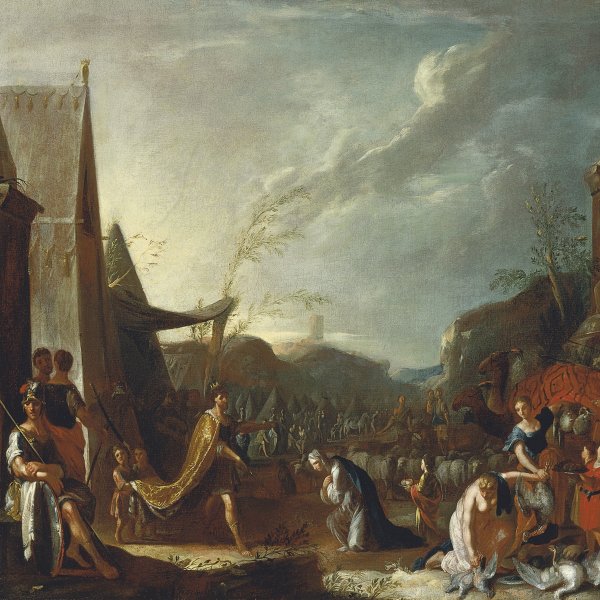Heinrich Schönfeld
Biberach an der Riss, 1609-Augsburg, 1682/83
Son of a goldsmith from Biberach-an-der-Riss, Schönfeld probably first trained in the city of Memmingen in the workshop of the Sichelbein family of painters. His first documented work is a drawing of Diana, dated 1626 (Staatsgalerie, Stuttgart), which clearly reveals his early interest in classical antiquity. In 1633 the artist was in Rome where he formed part of the Schildersbent association of northern artists resident in the city. In Italy Schönfeld’s work was influenced by the Italianate Dutch landscape painters, particularly Cornelis van Polenburgh and Herman van Swanevelt, while Poussin’s classicising style was of particular importance for his formation. In 1638 the artist moved to Naples where he remained for almost ten years. There he encountered the animated, colourful compositions of Salvator Rosa, Anielle Falcone, Domenico Gargiulo and Bernardo Cavallino, which notably influenced his work. One of Schönfeld’s finest works of this period is The Rape of Proserpine (Schaezlerpalast, Augsburg), a painting that reveals the clear influence of Jacques Callot. In 1651 Schönfeld is documented in Germany, and in 1652 he became a citizen of Augsburg where he remained for the rest of his life. Over the following years he was extremely active in various Bavarian cities and in northern Austria. His first important commission came from the Archbishop of Salzburg for whom he painted various works for the cathedral (all in situ). In 1667 Schönfeld is documented in Munich where he executed a decorative scheme on the subject of the Emperor Trajan (in situ). In the last twelve years of his career he focused on religious compositions.





